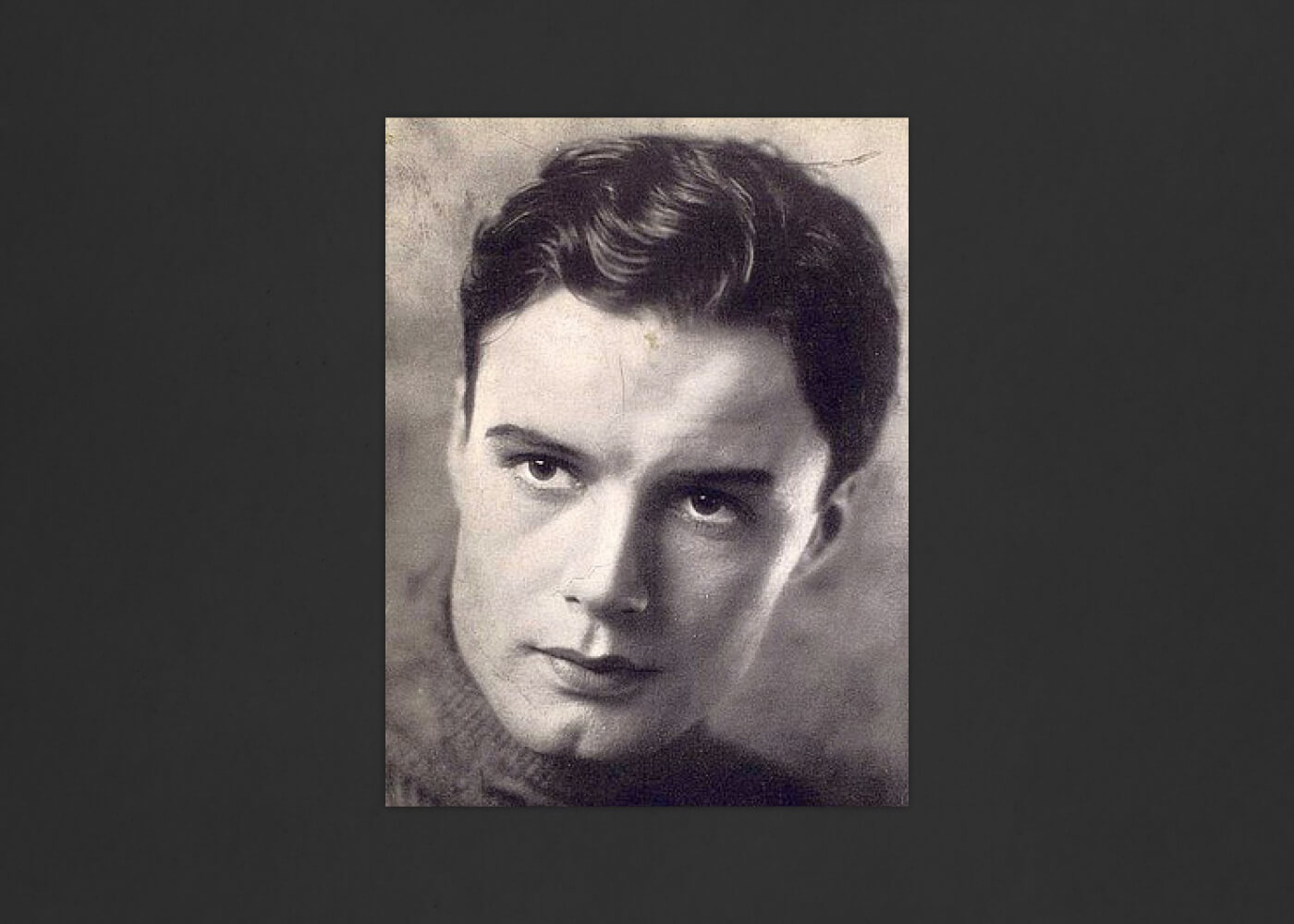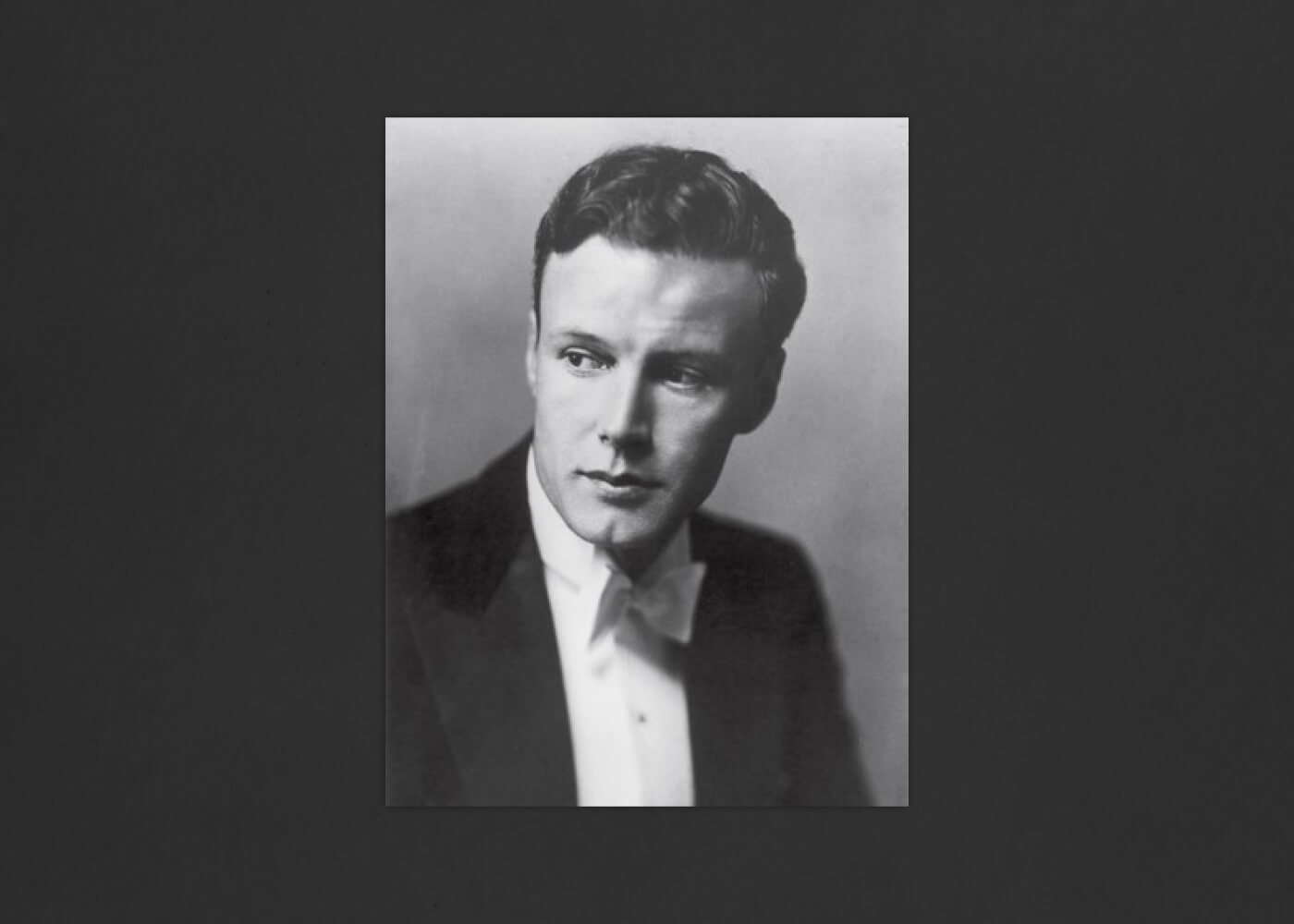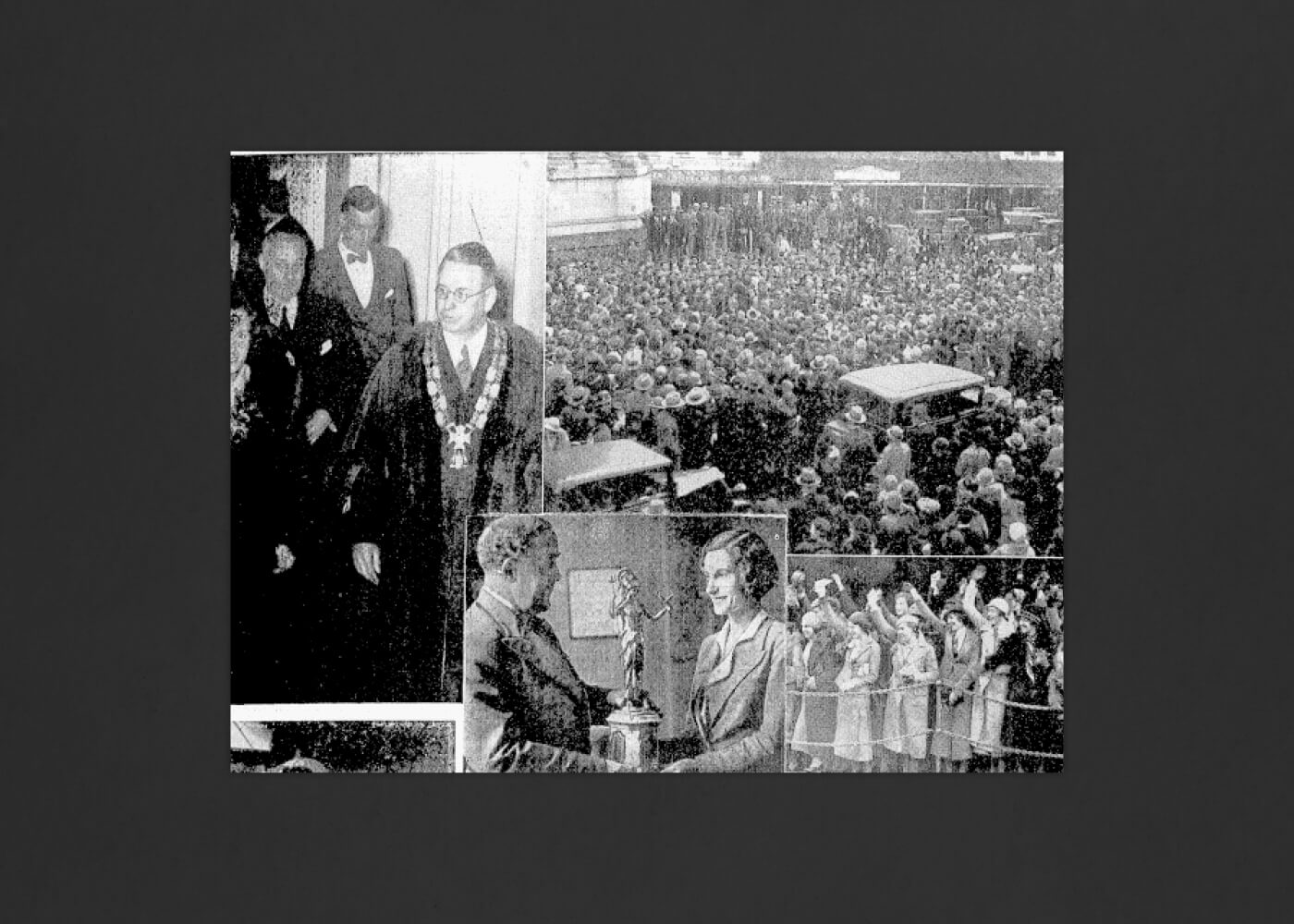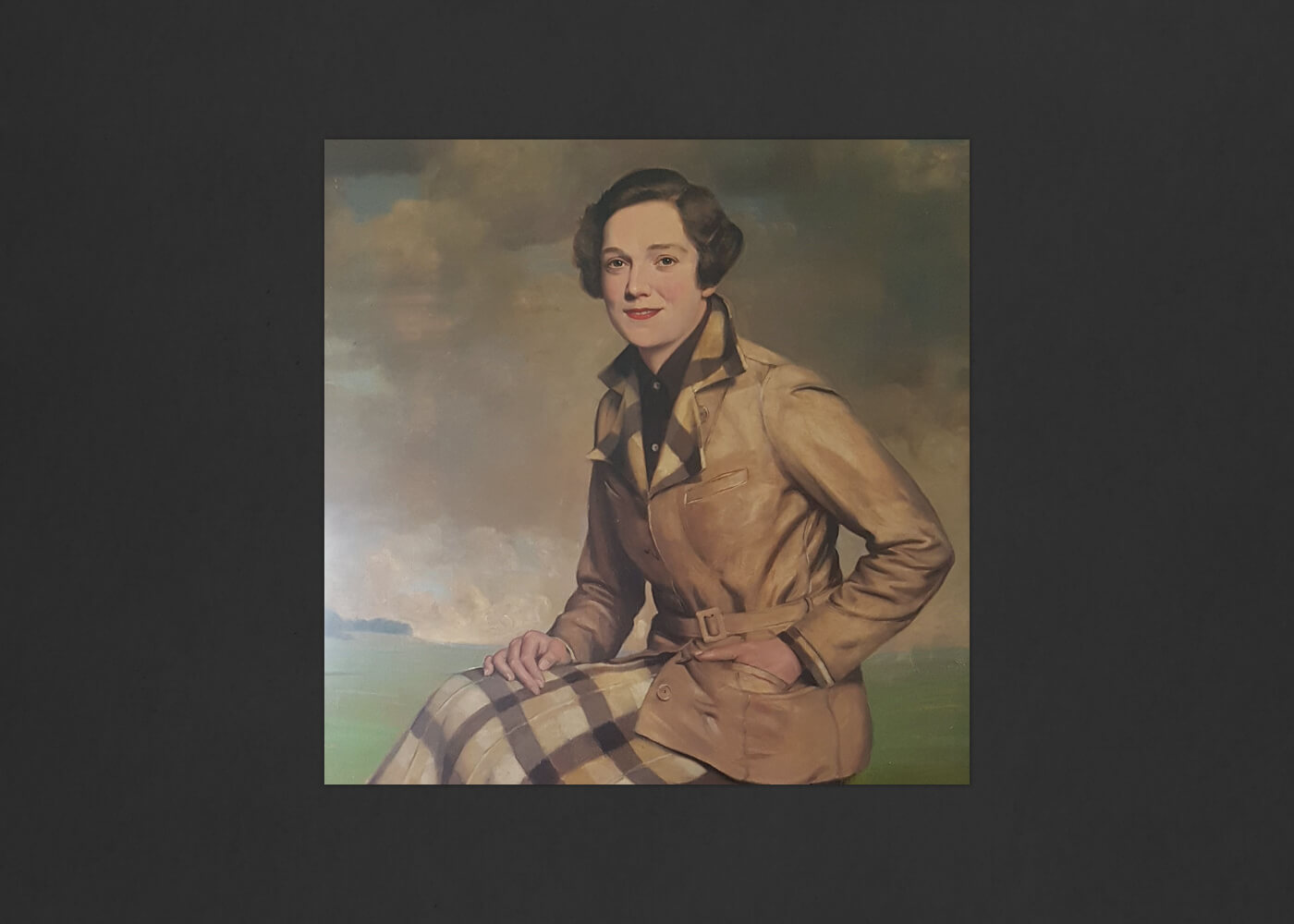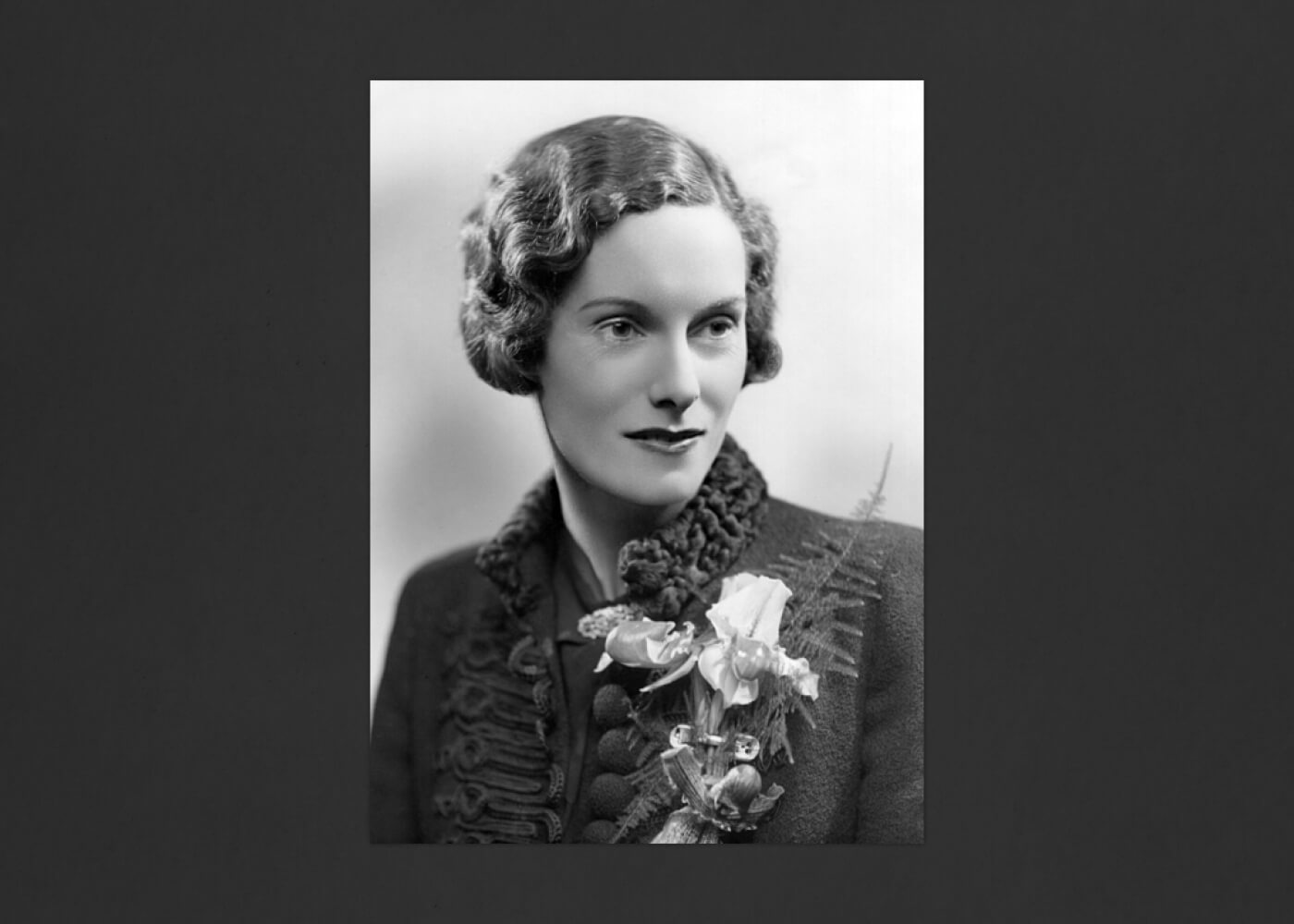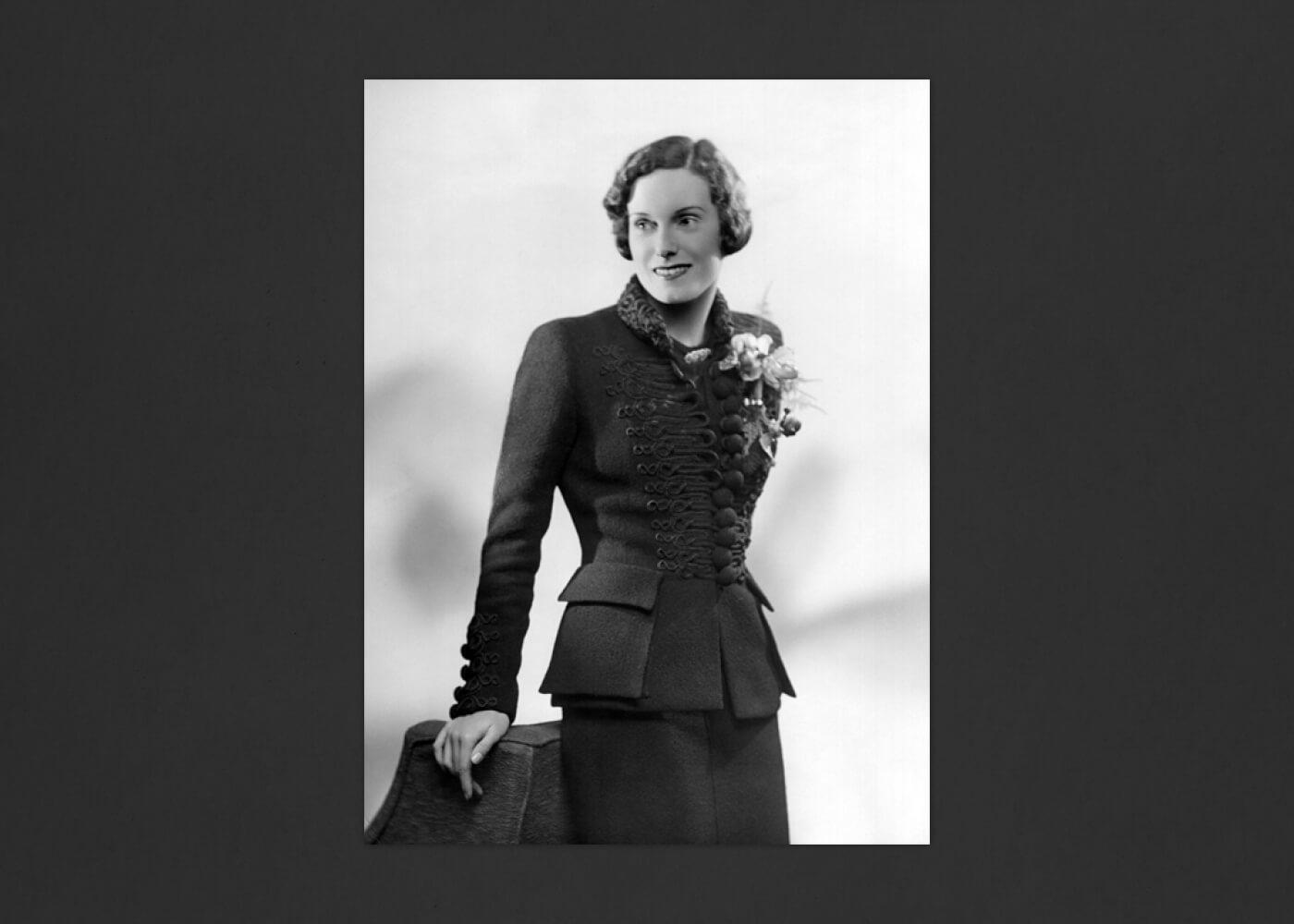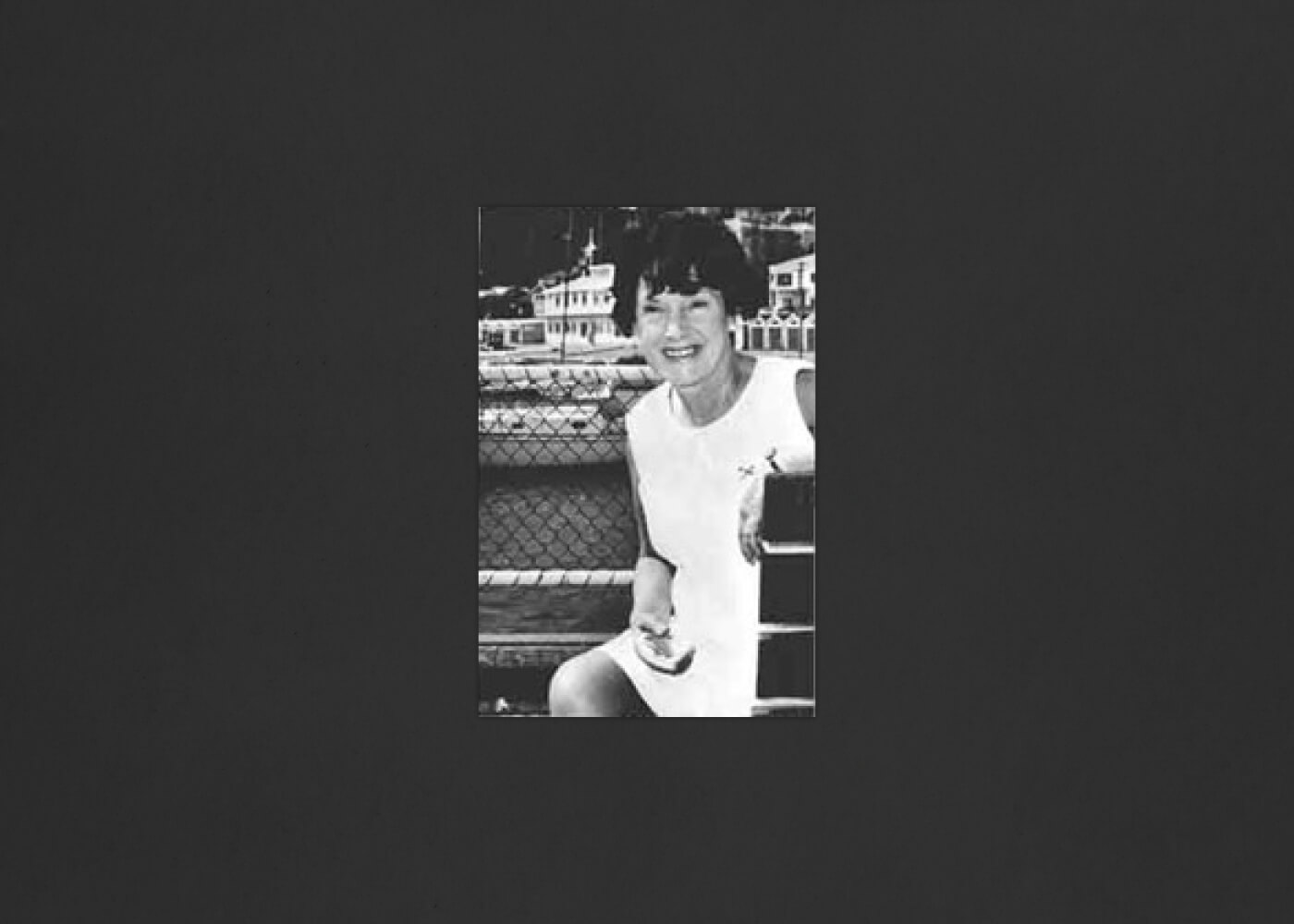On 5th December 1930, Jean obtained her pilot A license to become a private pilot.
Brief History
Jane Gardner Batten was born in Rotorua in 1909. She was the only daughter of a dentist, Frederick Harold Batten, and his wife, Ellen (Nellie) Blackmore. She was christened Jane after her grandmother.
In 1913 the Batten family moved to Auckland, and at five Jean was enrolled at Melmerley Ladies’ School at St George’s Bay Road, Parnell.
The family’s life was disrupted by the First World War, during which her father, age 37, served on the western front.
With the loss of his earnings, they fell on hard times and were forced to live in a succession of cheap and shabby lodgings; Jean was moved to Remuera Primary School.
The family moved from Grey Lynn to Remuera and rented a house on the south side of Remuera Road, at 60 Clonbern Rd. The house was owned by Edward (Ted) Laurie Wilcock, a dentist for whom Fred Batten had worked. Jean continued at Remuera Primary School.
So what got Jean Batten into flying?
Her father Fred took her to a dinner for Charles Kingsford-Smith in Auckland in 1928. Sir Charles Edward Kingsford Smith MC, AFC (9 February 1897 – 8 November 1935), nicknamed Smithy, was an Australian aviation pioneer. He piloted the first transpacific flight from California to Brisbane via Hawaii and Fiji. and the first flight between Australia and New Zealand. In 1935, Kingsford Smith and his co-pilot Tommy Pethybridge disappeared over the Andaman Sea while attempting to break the Australia–England speed record.
Nellie arranged for her to go to Sydney for a flight with Charles Kingsford-Smith in 1929.
Jean’s mother took her down to Mission Bay to visit the Kohimarama flying school of Leo and Vivian Walsh, who lived at Orakei Road, Remuera. Jean decided to become a pilot after Charles Kingsford-Smith visited New Zealand in 1928. She qualified as a pilot at the London Aero Club’s base at Stag Lane Aerodrome at Edgware, London in 1930.
In 1930 Jean told Fred she was going to attend the Royal College of Music, when in fact she joined the London Aero Club (LAC) in north-west London, even selling her piano to help pay for her flying fees.
On 5th December 1930, Jean obtained her pilot A license to become a private pilot.
Although it only required 3 hours’ worth of solo flying time, a lack of funds made this difficult for her to achieve. When her father found out what she was really doing, he stopped giving her an allowance. Jean and Nellie were forced to return to New Zealand.
In 1933 Jean purchased a Gipsy Moth that had been owned by Edward, Prince of Wales and had it fitted with long-range fuel tanks and a secret built-in trap-door toilet, designed by Geoffrey de Havilland himself. Her route was plotted meticulously: 25 legs across 13 countries; 17,280 km to Darwin, another 3200 km to Sydney; the precise hours of daylight each day; a schedule of routine engine checks; fuel usage; distances between refuelling stops; each airstrip’s surface type. Plus she was a superb navigator. (NZ Geographic).
The Gipsy Moth didn’t have the fuel capacity to fly across the Tasman, so was shipped on the Aorangi with Jean to Auckland.
Batten sailed to New Zealand in late June 1934 with her mascot cat, Buddy. On 8 June 1934 Batten had met a group of ex-servicemen at the Prince of Wales Military Hospital in Randwick, Sydney. During her visit they presented her with a small black kitten ‘for luck’. She named him ‘Buddy’ and he subsequently accompanied her during her four-week tour of Australia & NZ.
In Australia and New Zealand, Jean Batten was lionised. Rewards and lecturing at 20 civic receptions brought sudden prosperity, and large crowds followed her wherever she went. She revelled in the adulation, impressing with her poise and speaking ability.
During 5-16 October 1936, Jean flew from England to New Zealand 14,224 miles in 11 days and 45 mins. This was the first direct flight from England to New Zealand and also the first direct record flight from Sydney to Auckland in 10.5 hours.
Jean Batten set a new record for the Australia to England solo flight from 19-24 October 1937.
Jean Batten did not fly during WW2. She offered her services, as long as she could fly her Gull, but when this was refused she declined to join the auxiliary.
The Gull was requisitioned by the RAF and Jean, after a few months as an ambulance driver with the Anglo-French Ambulance Corps, spent three years working on the assembly line in a munitions factory at Poole, Dorset.
After WW2 in 1946 Jean and her mother went to live in Jamaica for 6 years, the same time as Ian Fleming and Noel Coward, with whom they became great friends. Jean said she built a new house with a swimming pool, called Blue Horizon.
In 1953 the Battens returned to England and began a nomadic motor tour of Europe that was to last seven years. It was not until 1960 that they finally bought a villa in the small Spanish fishing village of Los Boliches, near Málaga. They lived here quietly for six years, until, at the end of 1965, they set off on what was to have been an extended winter holiday to Madeira, the Canary Islands and North Africa. However, on 19 July 1966 Ellen died in Jean’s arms at San Marcos, Tenerife; she was 89.
Jean was grief-stricken.
She bought a tiny apartment in Puerto de la Cruz. She had lost touch with all her relatives and years of isolation had left her with few close friends. On Tenerife, which was to be her home for 16 years, she kept to herself, typing her memoirs, swimming alone each day in the harbour and walking about the town, always shielding her face under a wide-brimmed hat. At the end of 1969, she made a dramatic return to public life. With a face-lift, hair dyed jet black and wearing a miniskirt, Batten flew to London and re-immersed herself, amid much publicity, in the aviation world.
In 1970 Jean flew back to New Zealand and was interviewed by the New Zealand Women’s Weekly, on 27 April 1970.
Jean returned again to New Zealand in 1977.
In the 1980s Jean disappeared. It was not known where she might be, in England, NZ, Europe or the Caribbean. The N Z Government refused to help locate her. There was no N Z consulate in Spain. But a record of a flight to Palma in Majorca was found at Britannia Airways. Her death certificate was found with the date 22 November 1982. This was in 1987. It was found that she was buried in a communal grave, having died as a result of a bite from a dog with rabies.
A statue of Jean Batten is located outside Auckland International Airport, New Zealand. The bronze statue is the work of sculptor Anthony Stones. It was unveiled on 5 October 1989 by the Governor-General of New Zealand, Sir Paul Reeves. However, the statue was removed last year as work started for the new transport hub.
Jean’s Percival Gull plane is on display at Auckland International Terminal.
GOLD MEDALS
Federation Aeronautique Internationale.
Royal Aero Club of Great Britain.
Aero-Club de France.
Académie des Sports (France).
Royal Danish Aeronautical Society.
Ligue Internationale des Aviateurs.
Aero Club of Argentina.
Aero Club of Finland.
Royal Swedish Aero Club.
Royal Aero Club of Norway
HONOURS
1935. Brazil: Officer of the Order of the Southern Cross. OSC
1936. France: Chevalier of the Legion of Honour. Chev L.H.
1936. Great Britain: Commander of the British Empire. CBE

Jean Batten 1923, aged 15 Permission Batten Family Collection jb-1924 NZEdge website retrieved 27092017

Envelope containing material relating to Jean Batten's French teacher Mrs Katie Messenger J Batten back row 3rd from left 10th Dec 1926 MOTAT Walsh Memorial Library

Jean Batten's log book - flying over Italy in heavy rain, mist and cloud 9th May 1934 MOTAT Walsh Memorial Library 04-3651_002

Jean Batten's flight log book over Sumatra noting crocodiles lying in the mud on river banks 20 May 1934 MOTAT Walsh Memorial Library 04-3651_003
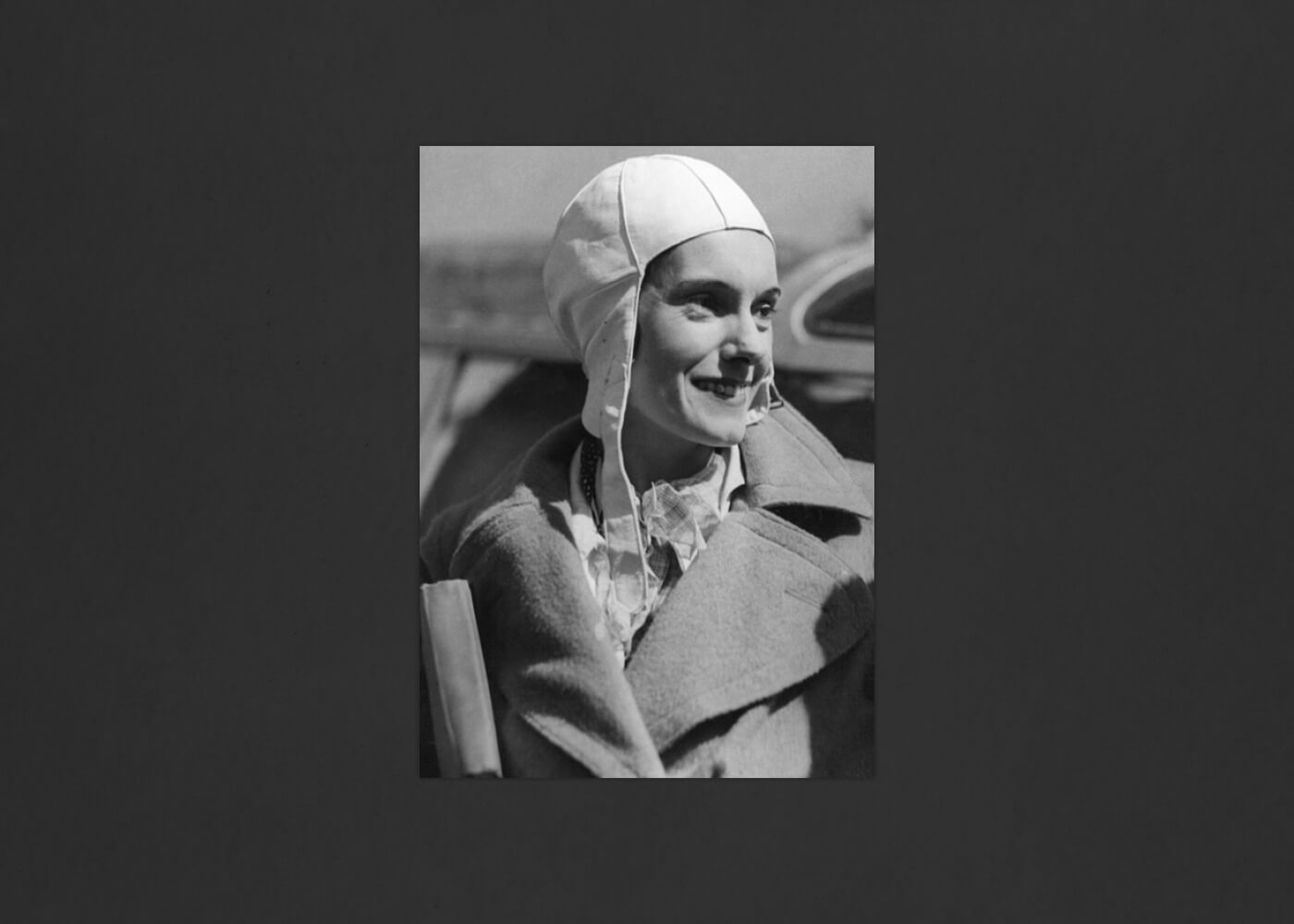
Jean Batten after completing her record solo flight from England, Mascot Aerodrome, Sydney 1936 ANZ003-016

Jean Batten looks out from her cockpit upon arrival at Mascot Aerodrome, Sydney after her record solo flight from England 1936 Fairfax ANZ003-017

Jean Batten with Rangitira Mita Taupopoki of Te Arawa in Rotorua 1934. Troughton Clark, Charles,1890-1973, photographer,Auckland Museum PH-RES-959

Jean Batten with man in front of Maori carving in Rotorua MOTAT Walsh Memorial Library PH0-2023-1.15_1

Jean Batten arriving on the USS Aorangi with her biplane with folded wings 1934 Sir George Grey Special Collections, Auckland Libraries, 7-A3705
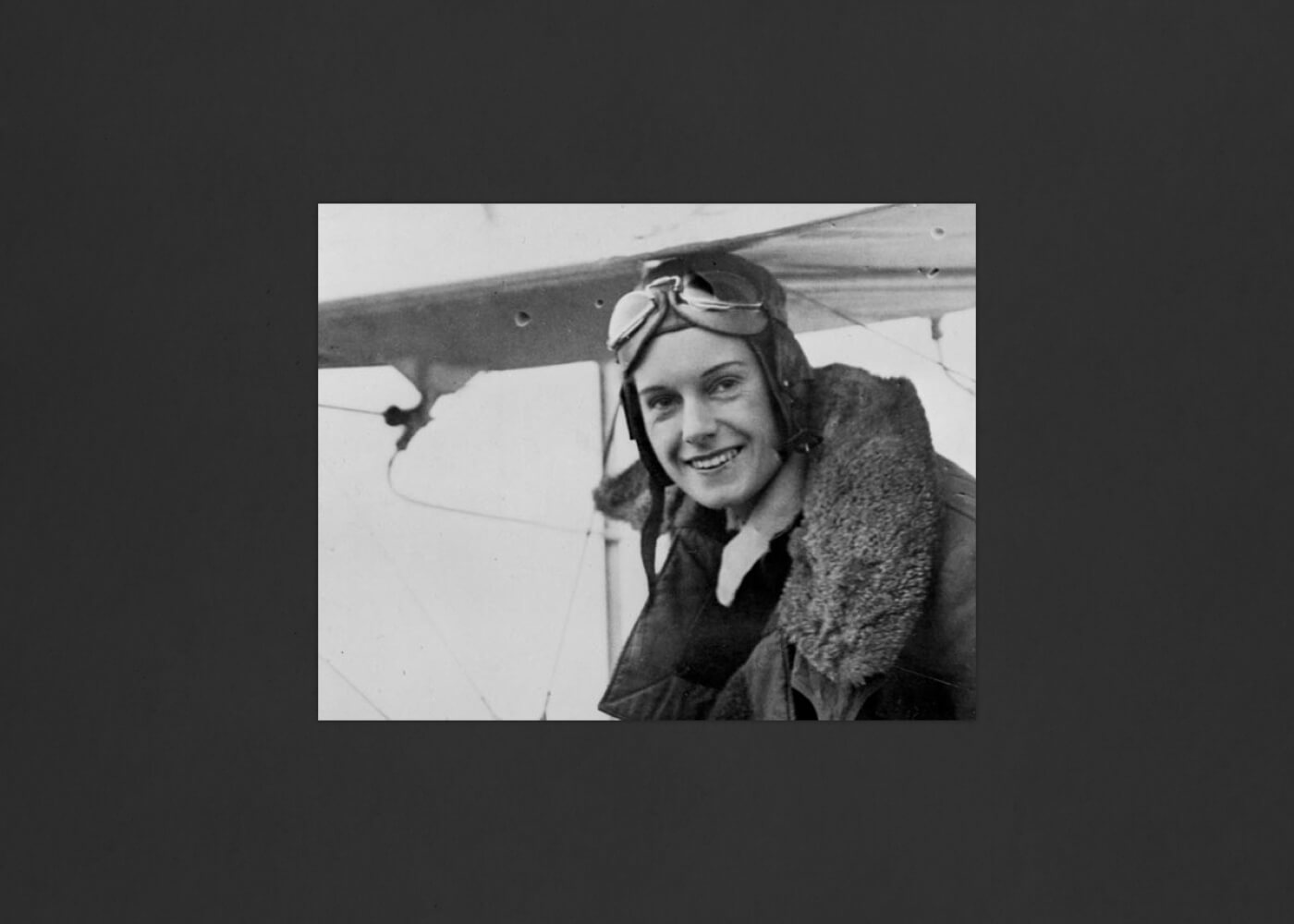
Jean Batten 1934_NZ History Ministry of Culture & Heritage https://nzhistory.govt.nz/people/jean-batten

Jean Batten in the cockpit of Gipsy Moth May 1934 G-AARB, Walsh Memorial Library, MOTAT PHO-0192-1.1.

Jean Batten kicking off at the Auckland versus Taranaki rugby match held at Eden Park, Auckland 15 Sept 1934 MOTAT Walsh Memorial Library

Portrait of aviator Jean Batten taken by Leo White on the 16th of October 1936. Alexander Turnbull Library WA-AVP-23-1-G

16 Oct 1936. Jean Batten arriving in Mangere, Auckland after solo flight from England in Percival Gull G-ADPR aircraft, PHO-0192-1.39. MOTAT Walsh Memorial Library Photographic Collections
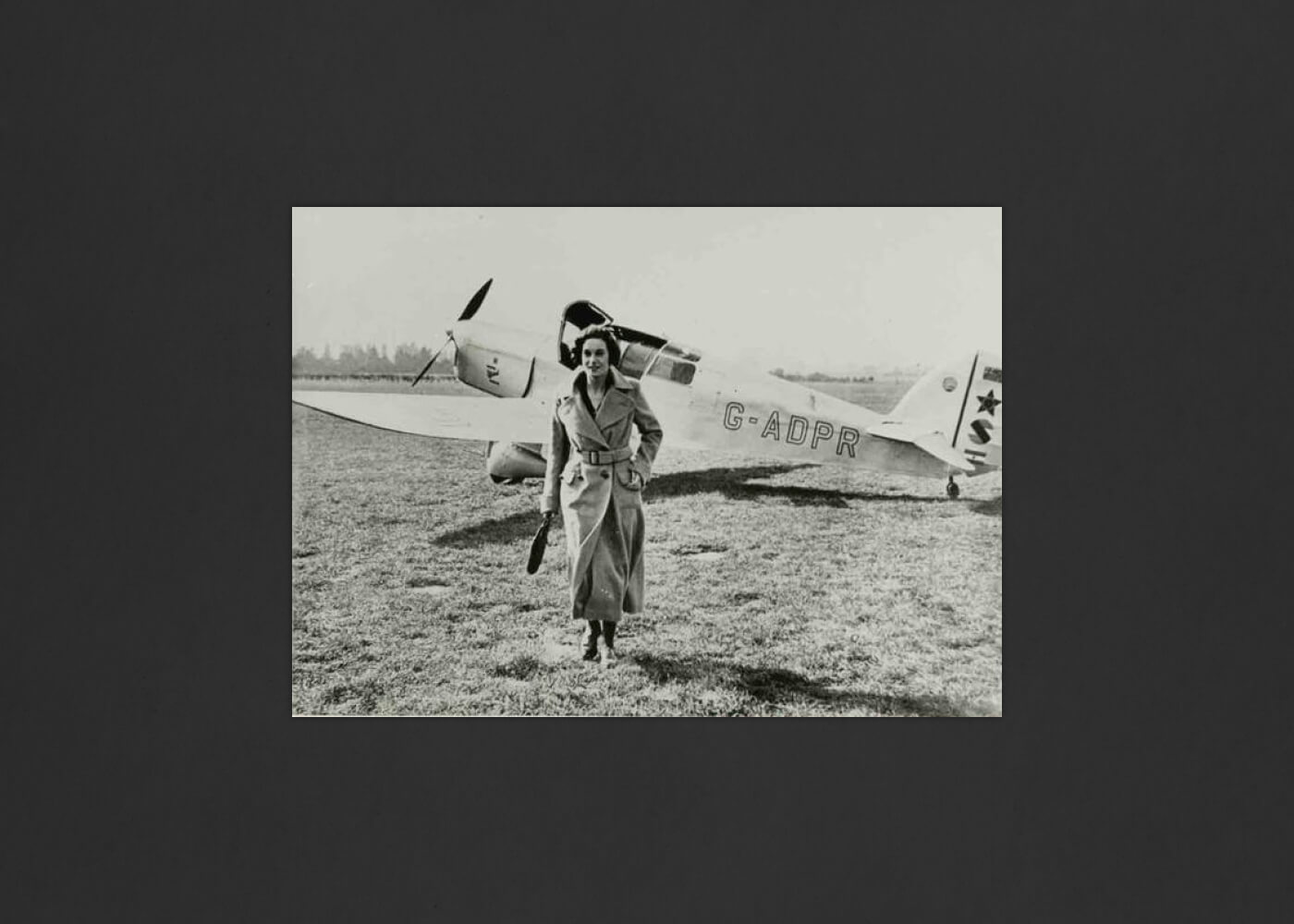
1935-1936 Jean Batten in front of Percival Gull G-ADPR at Hatfield Aerodrome, England, PHO-0192-1.29. Walsh Memorial Library, The Museum of Transport and Technology

16 Oct 1936. [Jean Batten surrounded by officials and supporters at the conclusion of her England - New Zealand flight, PHO-0192-1.41. Walsh Memorial Library, MOTAT Photographic Collections

Jean Batten after her historic flight from England, Mangere Aerodrome, Auckland 1936 Fairfax ANZ003-022

16 Oct 1936. [Jean Batten surrounded by officials and supporters at the conclusion of her England - New Zealand flight, PHO-0192-1.41. Walsh Memorial Library, MOTAT

Jean Batten after her solo flight from England 1936. Her father Fred is standing behind her, Mayor of Auckland, Ernest Davis, seated Sir George Grey Special Collections AWNS 19361021_51-1

Jean Batten 1935 Sir George Grey Special Collections Auckland Libraries AWNS-19361014-43-1 AWNS_19361014_43_1

Portrait of Jean Batten by Maurice Codner about 1935. Gifted by ANZ to MOTAT Walsh Memorial Library.
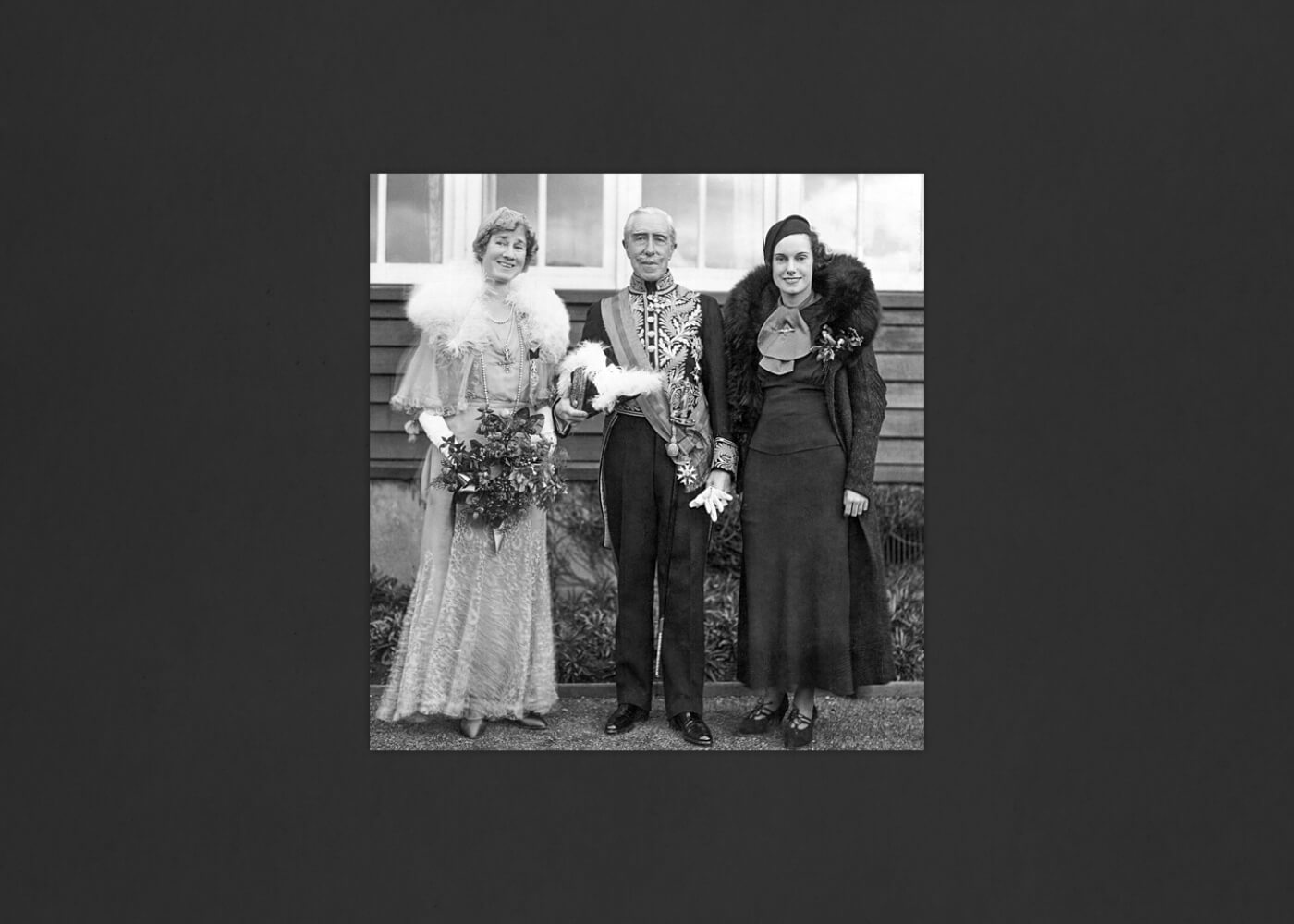
Jean Batten with Govenor-General Lord Bledisloe and Lady Bledisloe at Rongatai Airport 1936 Wellinton Alexander Turnbull Library PAColl-0889-2

Jean Batten set a new record for the Australia to England flight 1937. Sir George Grey Special Collections, Auckland Libraries, Auckland Weekly News -19371103-53-4

Jean Batten presented at court 1938. Sir George Grey Special Collections, Auckland Libraries, Auckland Weekly News Service-19380601-46-5

Jean Batten, a friendly alien, serving with the Anglo-French Ambulance Corps during World War II 1940 Fairfax ANZ002-053

Jean Batten shaking hands on occasion the Ambulance Trust Fund presented new ambulances to the L C C and Anglo-French Ambulance Corps 1940 MOTAT Walsh Memorial Library

After WW2 in 1946 Jean and her mother went to live in Jamaica for 6 years, the same time as Ian Fleming and Noel Coward, with whom they became great friends. Jean built a house with a swimming pool called Blue Illusion. The image is of Ian Fleming's house Goldeneye.

Jean Batten with Robert and Mrs Muldoon, Governor General andLady Blundell, and Ron Richardson, Auckland 1977 Fairfax ANZ003-062

British Petroleum Company Ltd. 1970. Jean Batten and Edgar Percival with Cyril Peckham's painting of Percival Gull G-ADPR PHO-0192-1.50. Walsh Memorial Library, MOTAT

Jean Batten at opening of the National Bank in Jean Batten Place Auckland MOTAT Walsh Memorial Library 11-1521

Jean Batten next to the Britannia Airways Boeing 737 named after her, Luton Airport, UK 1981. Farfax NZ003-073

Jean Batten at opening of Pioneers of Aviation building at MOTAT 2 April 1977. Walsh Memorial Library 03-742

Jean Batten's 1935 Silver Wings of Peace award, which she shared with Amelia Earhart 1988 Fairfax ANZ003-055
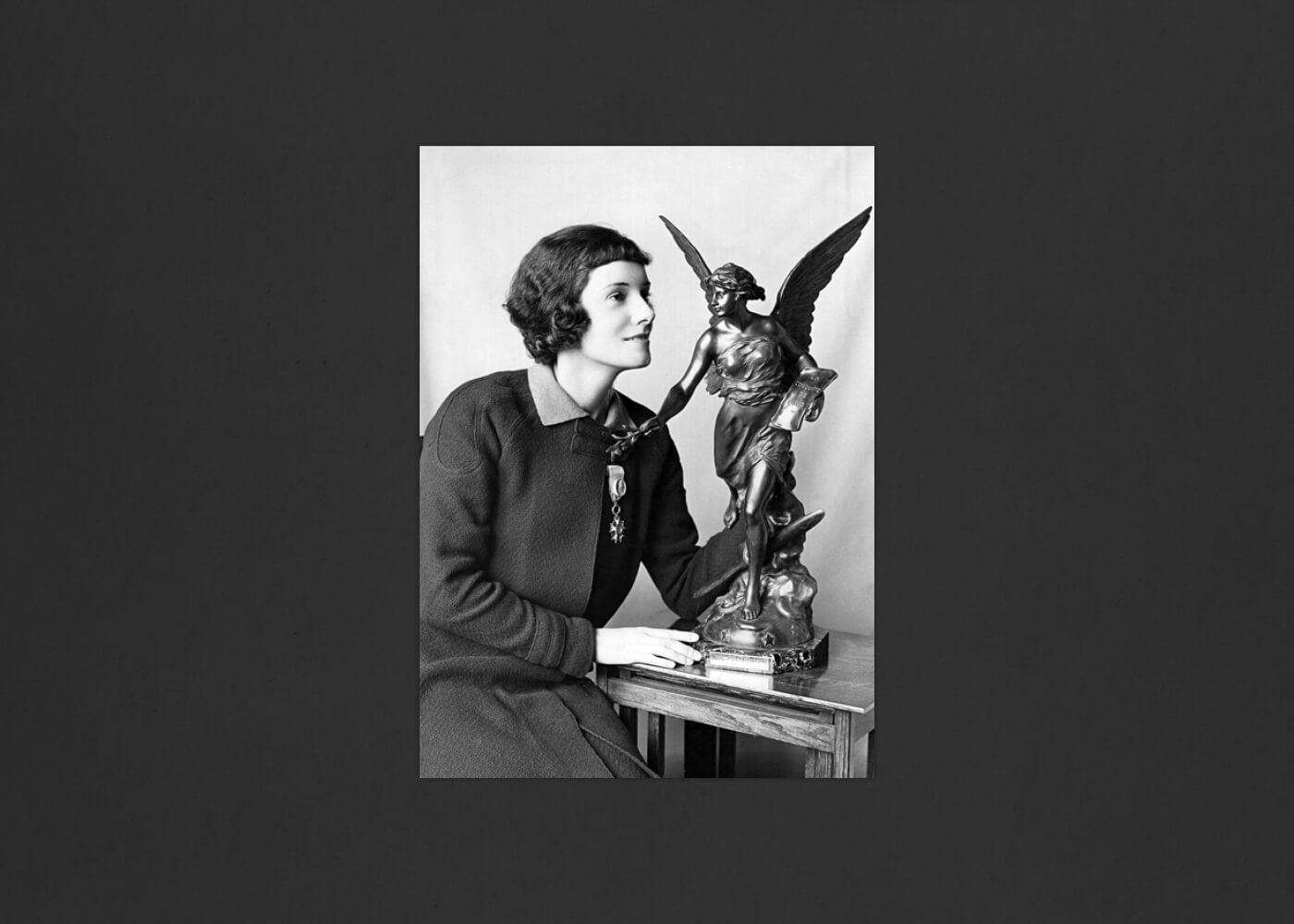
Jean Batten with the Order of the Southern Cross award, presented to her by the Brazilian government for her successful flight to Rio de Janeiro 1935 Fairfax ANZ003-011
References:
Jean Batten. My Life. London, Harrap, 1938. 303p.
Jean Batten. Alone in the Sky. The Airlife Publishing Company, 1979. Also Auckland, Technical Books, 1979.
Ian Mackersey. Jean Batten: The Garbo of the Skies. Auckland, Macdonald Publishers (NZ), 1990. 465p.
Fiona Kidman. The Infinite Air. Auckland, Vintage/Random House, 2013. 351p.
Special thanks to the Walsh Memorial Library, Museum of Transport & Technology / MOTAT, Auckland.





